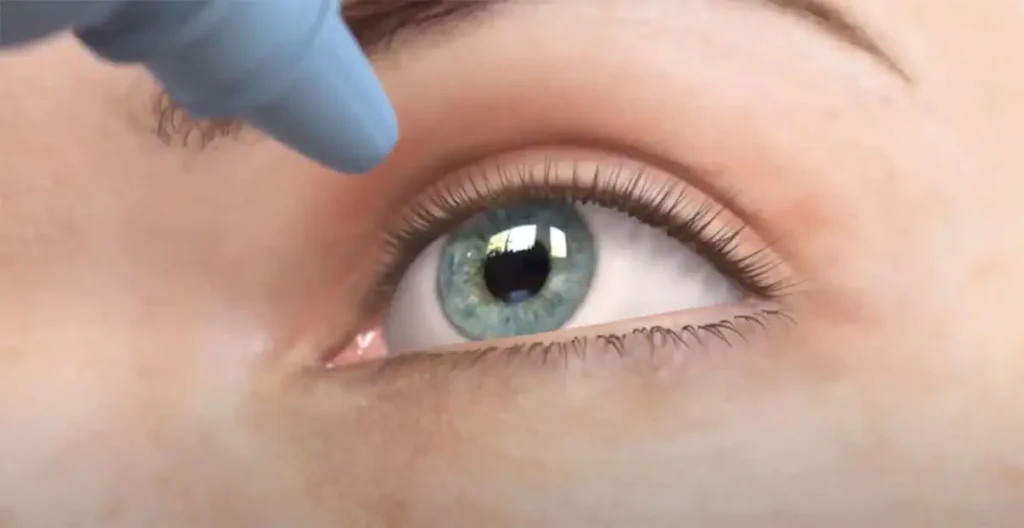If you’re considering Implantable Contact Lenses (ICLs) for vision correction, one of the first questions on your mind is probably:
“How much better will I actually be able to see after the procedure?”
The short answer? For most people, significantly better — often better than 20/20 vision.
Let’s explore exactly what kind of visual improvements you can expect, how ICLs compare to other treatments like LASIK or glasses, and what real-world patients experience in terms of clarity, contrast, and long-term satisfaction.
Understanding Vision Measurements: What Does 20/20 Mean?
Before we get into results, let’s clarify how vision is measured:
- 20/20 vision means you can see at 20 feet what the average person can see at that distance — this is considered “normal” vision.
- 20/15 or 20/10 vision means your vision is better than normal — you can see clearly at 20 feet what a person with normal vision can only see at 15 or 10 feet.
ICLs have been shown to correct vision beyond 20/20 in many cases.
Typical Vision Results After ICL Surgery
Most patients experience dramatic improvement in their uncorrected visual acuity (UCVA — vision without glasses or contacts) after ICL implantation. Here’s what the data shows:
✅ Common Vision Outcomes:
- 90–99% of patients achieve 20/20 vision or better.
- 50–60% of patients achieve 20/15 vision.
- Many patients with high myopia (over -10.00 diopters) who could barely see the big “E” on the eye chart now enjoy near-perfect vision.
✨ Improved Contrast Sensitivity and Night Vision
ICLs also provide excellent contrast sensitivity, which means you can distinguish fine details and subtle differences in shades — especially in dim lighting. This often leads to:
- Sharper vision in low-light conditions
- Less glare and fewer halos compared to LASIK
- Improved performance while night driving or reading
How ICL Vision Compares to LASIK and Glasses
👓 ICL vs. Glasses:
- Glasses sit about 12 mm from the eye, so they distort peripheral vision and compress visual space.
- ICLs are implanted inside the eye, giving you a natural, seamless field of view.
- No fogging, slipping, or peripheral blurring.
🔬 ICL vs. LASIK:
- LASIK reshapes the cornea, which can cause glare, dry eyes, or visual distortions over time.
- ICLs maintain the natural shape of your eye and typically provide sharper vision with fewer side effects.
- ICLs are especially advantageous for people with moderate to high myopia (typically above -6.00 diopters).
Real-Life Examples: What Patients Report
🚗 Night Driving:
“After ICL, driving at night is no longer stressful. The glare from oncoming headlights is minimal, and I feel much safer.”
🎯 Daily Activities:
“Everything looks crisper — text on screens, signs in the distance, people’s faces. I didn’t realize how much detail I was missing.”
🏖️ Outdoor Lifestyle:
“My vision is so sharp now that I no longer wear glasses even for hiking, biking, or swimming. Total freedom!”
High Prescription? Even Greater Gains
If you have a very strong prescription (e.g., -10.00 or worse), the improvement after ICL can be life-changing. People who previously saw only shadows or blurry outlines often wake up seeing clearly for the first time in decades — without glasses or contacts.
🔬 Note: Patients with very high prescriptions often do better with ICLs than with LASIK, since laser correction has limitations and may not achieve full correction.
Long-Term Stability of Vision
One of the major advantages of ICLs is long-term stability:
- Vision remains sharp and consistent for 10+ years in most patients.
- Unlike LASIK, there’s no risk of corneal regression or tissue thinning.
- Your lens stays in place unless your prescription changes significantly, in which case it can be replaced.
What to Expect After the Procedure
- Immediate results are typical — many people report sharper vision within 24 hours.
- No need for external lenses — your visual acuity remains high without daily maintenance.
- Follow-ups ensure the lens stays well-positioned and vision remains optimal.
Conclusion: Life-Changing Vision Improvements with ICL
Implantable Contact Lenses can dramatically enhance your vision — often better than 20/20. From sharper detail and improved night vision to long-term consistency and comfort, the results are not just medical — they’re life-enhancing.
Whether you’re severely nearsighted or just tired of the hassle of glasses and contacts, ICLs can open your eyes (literally!) to a clearer, more vibrant world.




